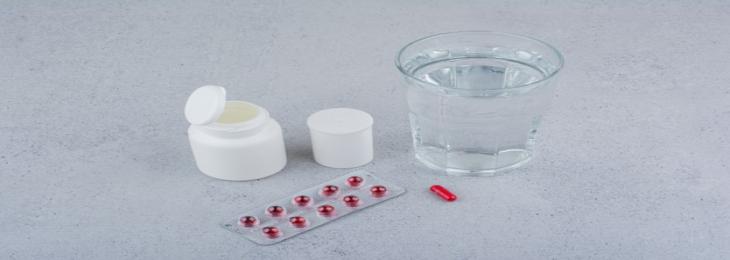
During the COVID-19 pandemic, India received requests from over 100 countries for Hydroxychloroquine (HCQ), paracetamol APIs, and tablet supplies. India provided all countries with paracetamol and HCQ. According to the India Brand Equity Foundation (IBEF), India is the largest provider of generic drugs globally. Indian pharmaceutical sector supplies over 50% of global demand for various vaccines, 40% of generic demand in the US, and 25% of all medicine in the UK.
India’s booming pharmaceutical sector has had a long and distinguished history in innovation and distribution of medicines at affordable rates across the world. The COVID-19 pandemic has shown that India can not only innovate but also rapidly distribute time-critical drugs to every part of the globe.
- According to India Brand Equity Foundation (IBEF), India is the world’s largest supplier of low-cost generics, vaccines and affordable medicines is among the largest producers of drugs both in value and volume terms and have the second-largest number of Food and Drug Administration (FDA) approved medicine manufacturing plants. This is a sunrise industry in India.
- Indian pharmaceutical companies have not only been successful in satisfying domestic needs for the past 50 years, but also in gaining a leading role in the global pharmaceutical landscape.
- According to the India Brand Equity Foundation (IBEF), the Indian pharmaceutical sector is expected to grow to US$ 100 billion, while the medical device market is expected to grow US$ 25 billion by 2025. Pharmaceuticals export from India stood at US$ 20.70 billion in FY20.
- According to the Ministry of Tourism, the medical tourism space was valued at around US$3 billion in 2015 and at US$9 billion in 2020.
India is emerging as a global hub for pharmaceutical manufacturing owing to a well-established domestic manufacturing base and availability of skilled labor at a lower cost. A potential exists for the Indian pharmaceutical industry to play a greater role in the protection of global drugs.
According to the Department for Promotion of Industry and Internal Trade (DPIIT), the drugs and pharmaceuticals sector attracted cumulative FDI inflow worth US$ 16.50 billion between April 2000 and March 2020
The COVID-19 pandemic has had a huge impact on every sector of the Indian economy.
Lockdown imposed by the Indian Government disrupted the movement of people and the delivery of different commodities. Due to the coronavirus outbreak, the prices of key ingredients used in the manufacture of medicines have increased. The prices for vitamins and penicillin have doubled or tripled. Similarly, the cost of paracetamol APIs has gone up. Moreover, pharmaceutical companies in countries such as China are facing disruptions in the sale of raw materials for drugs due to the close of manufacturing units and factories. If the pandemic continues then stockpiles of pharmaceuticals, APIs, and other chemicals may decrease, and result in shortages.
- According to, Food and Drug Administration (FDA) reports, antibiotics azithromycin and ornidazole, anti-inflammatory drug nimesulide, and antipyretic drug paracetamol have seen their prices jump between 60% and 190%.
Indian manufacturers rely heavily on imports of Active Pharmaceutical Ingredient (API) from China. Nationwide lockdown and closure of facilities have slowed the production of APIs, which in turn, has resulted in the low availability of materials required for the production of generics. The prices of vitamins and penicillin have also increased tremendously.
- According to India Rating and Research (Ind-Ra), companies increased prices of non-DPCO (drug price control order) products up to 8%, unlike the earlier average price hike of 5% (max limit 10%) due to an increase in raw material cost and the additional cost incurred in terms of logistics and manpower.
The marketing staff of various pharmaceutical companies is facing challenges in generating sales as they are unable to conduct in-person sales calls as they used to in the pre-pandemic scenario.
The outbreak of the COVID-19 pandemic has caused potential disruptions in the supply of critical medical products.
Manufacturers of pharmaceuticals are facing challenges due to factory closures. In China, several factories where the majority of raw ingredients used to manufacture finished drugs have been temporarily shuttered to curb the spread of coronavirus. The Indian API industry has been struggling for a long time because of high dependence on China, which accounts for overall imports of API across the globe. As a result, prices of APIs have fluctuated frequently in the recent past. Due to the competitive pricing offered by Chinese suppliers, in the last few years, the Indian API industry has been dependent on China for imports of APIs
- According to Price Waterhouse and Coopers & Lybrand (PWC), 50% of APIs are imported and the bulk of these imports are from China. The Indian pharma industry is highly dependent on imports from China for some of the key APIs: penicillin G, levodopa, streptomycin, meropenem, carbidopa, vancomycin, gentamicin, and progesterone.
- According to India’s Drug Regulatory Authority (IRDA), 57 APIs of crucial antibiotics, vitamins, and hormones or steroids could go out of stock in case of a prolonged lockdown in China.
India is in need of a holistic and conducive ecosystem to capitalize on the full potential of its API manufacturing capabilities which would require favorable policies from the government and a supportive financial ecosystem to boost private and foreign investment.
The government of India excluded private laboratories from the lockdown to ensure the movement of lab technicians and transportation of samples. Moreover, temporary collection centers were also exempt from the lockdown. Truck drivers would have to generate the electronic waybill provided by GST Network, or the invoice for easy passage, to resolve the movement of Inter-State Transport.
Smaller companies particularly took an initial hit facing a dip in production, disruptions in the supply chain (cross-border and domestic), reduced ability to strike deals with other businesses, minimal movement of labor due to stringent social distancing measures, and delay in approvals.
The COVID-19 pandemic has posed several challenges to the pharma industry, however, the industry’s performance at this time is a testimony to its resilience. India has risen to the occasion and lived up to its status of the ‘Pharmacy of the World’. This is a critical time for India to enhance rade relations with existing partners and forge new partnerships. The pharmaceutical sector can contribute significantly to the country’s exports, but the continuation and extension of additional support for exports will be essential to leverage the opportunities at hand.
For instance, In October 2020, six Indian drug makers- Dr. Reddy’s Laboratories, Zydus Cadila, Glenmark Pharmaceuticals, Torrent Pharmaceuticals, Hetero Drugs, and Ackerman Pharma have signed a deal with
India’s pharmaceutical exports are directed to several countries such as the U.S., U.K., South Africa, Russia, Nepal, Bangladesh, etc. In the midst of COVID-19, some of these nations have been sent critical drugs such as paracetamol and ritonavir. Many pharmaceutical ï¬rms in India have also extended their support through the supply of essential drugs such as hydroxychloroquine (HCQ) to these nations to counter COVID-19.
The government of India has allocated US$ 1 billion from the PM-CARES fund to support the development of a vaccine for COVID-19. Over 100 vaccine attempts are being made worldwide out of which around 30 have been in India. At least 10 vaccine projects are getting support, both monetary and regulatory, from the Department of Biotechnology (DBT), Biotechnology Industry Research Assistance Council (BIRAC) consortium. Research teams from IIT-Guwahati, Indian Institute of Chemical Technology, CMC Vellore, and private ï¬rms such as Zydus Cadila, Auro Vaccines, Bharat Biotech, and Serum Institute are in various stages of developing a vaccine.
For e.g. Bharat Biotech has received a nod for a clinical trial of its vaccine, Covaxin. This is the first indigenous vaccine being developed by India. This vaccine is derived from a strain of SARS-CoV-2 isolated by ICMR- National Institute of Virology, Pune. ICMR and Bharat Biotech are jointly working on preclinical as well as clinical development of this vaccine.
The pandemic has provided an opportunity for Indian pharmaceutical companies to focus on global partnerships and upscale their activities despite the impact on the supply chain of raw materials.
The Indian Government has taken many steps to reduce costs and bring down healthcare expenses.
For instance, The National Health Protection Scheme is the largest Government-funded healthcare program in the world, which is expected to benefit 100 million poor families in the country by providing a cover of up to US$ 7,723.2 per family per year for secondary and tertiary care hospitalization. The program was announced in Union Budget 2018–19.
There is a need to make research and surveillance institutions more contemporary, especially in the newer areas of Artificial Intelligence (AI), Machine Language, data sciences, social media communication.
Demand for accessible medicine is likely to grow following the COVID-19 pandemic as climate change and other environmental issues trigger health issues, and the aging population across the requires active medical care. India is likely to play a pivotal role in providing medicinal support around the world, especially where affordable healthcare is needed.
During the pandemic, India has demonstrated quick decision-making skills as well as innovation in almost every area. This was powered through an ecosystem of openness of the government and spontaneous innovation and response from government and non-government bodies. There is a need to build on this and create a robust and viable ecosystem and a formal mechanism in which partnerships and collaborations among government and non-government research institutions, academia, and the startup ecosystem can thrive.
In India, this is the right opportunity for the health care sector to emerge as the global ‘medical superpower’ by providing essential drugs, medical expertise, treatment infrastructure, and capacity building to other nations with limited prospects.






